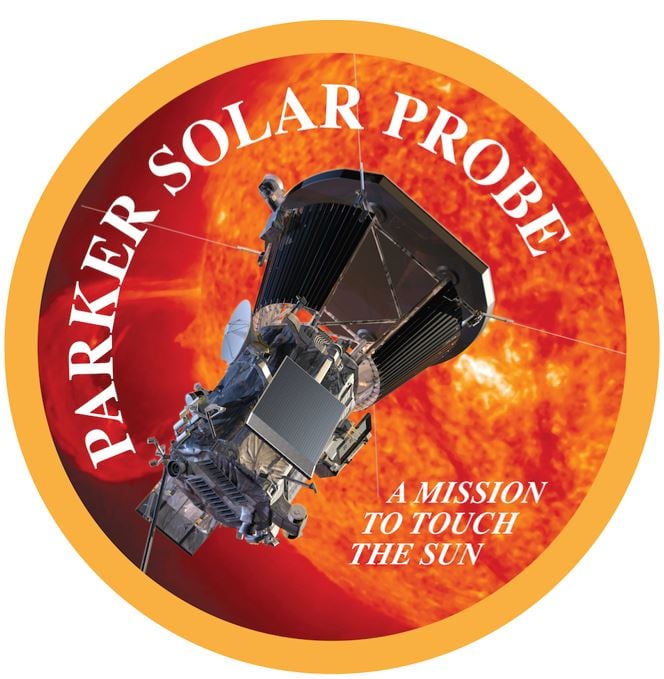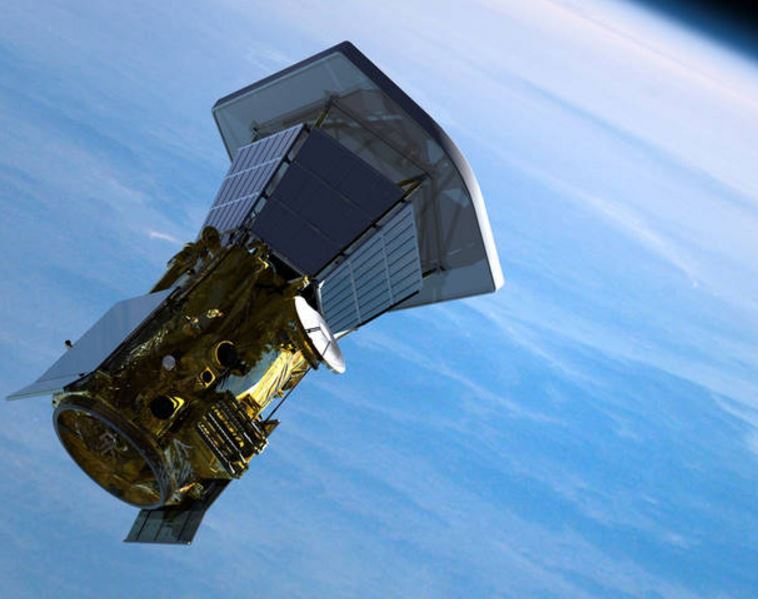The Parker Solar Probe will travel through the sun’s incredibly hot atmosphere, says NASA, closer to our star’s surface than any spacecraft before it. It will face brutal radiation and heat conditions, and will provide us with the closest-ever observations of a star.
The solar probe will lift off during the next launch window – from July 21 to August 19, 2018 – from NASA’s Kennedy Space Center in Florida.
In order to gain a better understanding of the Sun’s atmosphere, it will use planet Venus’ gravity during seven flybys over a period of almost seven years to gradually bring its orbit nearer to the Sun.
The solar probe will fly right through the Sun’s atmosphere – just 3.9 million miles from the surface of our star.
 NASA’s first mission to go to the Sun – the Parker Sun Probe – named after Eugene Parker, who first theorized that the Sun continuously sends out a flow of energy and particles called the solar wind. (Image: nasa.gov)
NASA’s first mission to go to the Sun – the Parker Sun Probe – named after Eugene Parker, who first theorized that the Sun continuously sends out a flow of energy and particles called the solar wind. (Image: nasa.gov)
If the mission is a success, it will have reached seven times closer to the Sun’s surface than any spacecraft before.
“Flying into the outermost part of the sun’s atmosphere, known as the corona, for the first time, Parker Solar Probe will employ a combination of in situ measurements and imaging to revolutionize our understanding of the corona and expand our knowledge of the origin and evolution of the solar wind.”
“It will also make critical contributions to our ability to forecast changes in Earth’s space environment that affect life and technology on Earth.”
Primary mission of the solar probe
The primary mission of the solar probe is to trace how heat and energy move through the solar corona. Scientists also want to use the probe to determine what accelerates the solar wind and solar energetic particles.
For over sixty years, scientists have sought these answers, but in order to get them it has meant sending a solar probe right through the Sun’s corona, where the temperature exceeds 2,500 degrees Fahrenheit.
Thanks to cutting-edge thermal engineering advances that can protect the spacecraft from extreme conditions, this has finally become possible.
 This artist’s illustration depicts the Parker Solar Probe leaving Earth, after separating from its launch rocket and booster, bound for the atmosphere of the Sun. (Image: nasa.gov)
This artist’s illustration depicts the Parker Solar Probe leaving Earth, after separating from its launch rocket and booster, bound for the atmosphere of the Sun. (Image: nasa.gov)
The Parker Solar Probe will be fitted with four instrument suites designed to study plasma, energy particles, magnetic fields, and capture images of the solar wind.
At its closest point to the Sun, the solar probe will be traveling at about 430,000 mph (700,000 km/h). That’s fast enough to get from Philadelphia to Washington D.C. in the USA, or from Brighton to Birmingham in the UK, in one second.
NASA adds:
“At closest approach to the sun, the front of Parker Solar Probe’s solar shield faces temperatures approaching 2,500 F (1,377 C). The spacecraft’s payload will be near room temperature.”
“On the final three orbits, Parker Solar Probe flies to within 3.7 million miles of the sun’s surface – more than seven times closer than the current record-holder for a close solar pass, the Helios 2 spacecraft, which came within 27 million miles in 1976 and more than 10 times closer than Mercury, which is about 42 million miles from the sun.”
Why study the Sun and solar wind?
– With our current level of technology, sending a solar probe to the Sun is the only way we can study a star up close. By learning more about our parent star (the Sun), we also gain a better understanding of stars across the Universe.
– The Sun is our planet’s source of light and heat. The more we know about our star and the light and heat it provides us with, the better we’ll understand how life on Earth developed.
– The Sun is a source of the solar wind – a flow of ionized gases from our star that streams past our planet at more than one 1,000,000 mph.
– Space weather affects the lifespans of our satellites, it can change their orbits, and even interfere with onboard electronics. We need to know more about the causes of space weather, and how to make accurate space weather forecasts, in order to protect our satellites.
– Much of our Solar System is filled with solar wind – it dominates the space environment far past our planet. As our spacecraft and human space travelers venture further and further from Earth, we need to understand this space environment, in the same way our early seafarers needed to understand the ocean.
Why call it the Parker Solar Probe?
In May 2017, NASA renamed the Solar Probe Plus spacecraft as the Parker Solar Probe, in honor of Eugene Parker (born in 1927), an American solar astrophysicist, who in the mid-1950s developed the theory on the supersonic solar wind. Parker also predicted the Parker Spiral Shape of the solar magnetic field in the outer solar system.
In 1958, a young Parker, who was a professor at the University of Chicago’s Enrico Fermi Institute, published an article in the Astrophysical Journal titled ‘Dynamics of the interplanetary gas and magnetic fields‘.
Prof. Parker believed that there was high speed matter and magnetism continuously escaping the Sun, and that it affected space throughout our Solar System, including its planets.
“This phenomenon, now known as the solar wind, has been proven to exist repeatedly through direct observation. Parker’s work forms the basis for much of our understanding about how stars interact with the worlds that orbit them.”
Thomas Zurbuchen, associate administrator for NASA’s Science Mission Directorate in Washington, said:
“This is the first time NASA has named a spacecraft for a living individual. It’s a testament to the importance of his body of work, founding a new field of science that also inspired my own research and many important science questions NASA continues to study and further understand every day. I’m very excited to be personally involved honoring a great man and his unprecedented legacy.”
Prof. Parker said:
“The solar probe is going to a region of space that has never been explored before. It’s very exciting that we’ll finally get a look. One would like to have some more detailed measurements of what’s going on in the solar wind. I’m sure that there will be some surprises. There always are.”
Video – Parker Solar Probe
This NASA Goddard video explains how the very first Solar Probe will embark on a historic journey to our very own star – the Sun.

